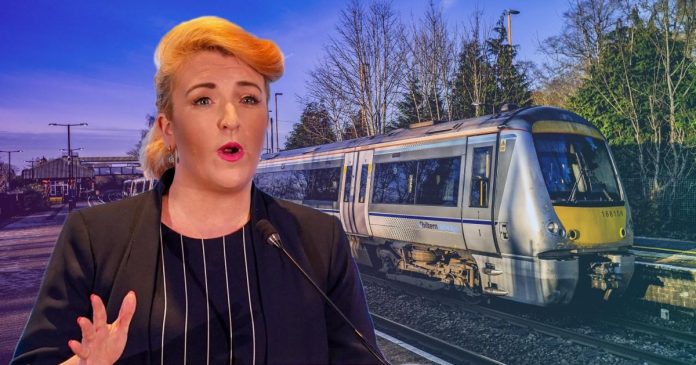British Railways Could Return to Public Ownership Under Labour Plans
A Labour government is set to bring the entire UK rail network back under public ownership, according to the shadow transport secretary. Louise Haigh revealed that if the party wins the upcoming general election, they will create a new national operator called Great British Railways (GBR). This arm’s-length public body will gradually take control of the tracks as existing private contracts expire. This move would mean the end of individual franchises like Avanti West Coast, West Midlands Trains, c2c, LNER, and the TransPennine Express. All these franchises would eventually be absorbed by the GBR brand, putting an end to passenger concerns about ticket compatibility between operators.
Labour’s plans also include the abolition of Network Rail, aiming to bring tracks and trains together under one banner. However, industry experts have warned that this move could result in higher costs for taxpayers in the long run.
Open-access operators like Lumo would still be able to use Britain’s tracks under Labour’s proposals. In an exclusive interview, Haigh highlighted the issues with the current rail system, stating that it doesn’t work for taxpayers, passengers, or the economy. She emphasized the frequent delays, overcrowding, and industrial action that have hindered economic growth.
The plans also involve giving more power over infrastructure to the devolved administrations, such as ScotRail and the Wales & Borders franchise, which are currently controlled by the Scottish and Welsh governments, respectively. This transfer of power would take place once Network Rail is dissolved.
The last time rail was nationalized in the UK, there were mixed results.
UK Railways Taken into Public Ownership in 1947
The UK railway network was brought under public ownership in 1947 as part of Prime Minister Clement Attlee’s nationalization efforts. This move coincided with the establishment of the NHS, marking a significant moment in British history.
British Rail’s Legacy and Privatization
For nearly 50 years, British Rail operated the railway network, but its reputation suffered due to the infamous Beeching cuts in the 1960s, which resulted in the slashing of numerous routes. Throughout the 1970s and 1980s, it became a subject of ridicule, with comedians mocking its poor food and unreliability.
In the 1990s, under the leadership of John Major, a privatization program was implemented. When Labour came into power, Tony Blair chose not to reverse this process. However, the iconic British Rail double arrow logo continues to be used as a symbol of the railway system.
GBR: A New Direction for Railways
The proposed Great British Railways (GBR) aims to make operational decisions with input from rail experts instead of government officials. This change is expected to enable innovations and improvements to benefit passengers. Existing staff, such as conductors and drivers, would be transferred to GBR contracts.
Franchise Contracts and the Role of Private Business
All major franchise contracts are set to expire within the next five years. The concept of Great British Railways was introduced in a white paper by the Conservative government in May 2021. The plan outlined a significant overhaul of the railways, which has yet to be fully realized. The vision involves GBR owning the infrastructure, managing fare revenue, planning the network, and setting most fares and timetables. However, separate companies would be contracted to operate the trains.
Criticism and Alternative Perspectives
Rail Partners, an industry body supporting the Williams-Shapps plan, argues that Labour’s nationalization proposal would lead to a lengthy and chaotic transition. They believe that nationalization is a political choice that will increase costs over time. Instead, they advocate for a balanced approach that combines private investment and innovation with public ownership.
Overall, the future of the UK railway network remains uncertain as the government explores different strategies to improve efficiency and service for passengers.

